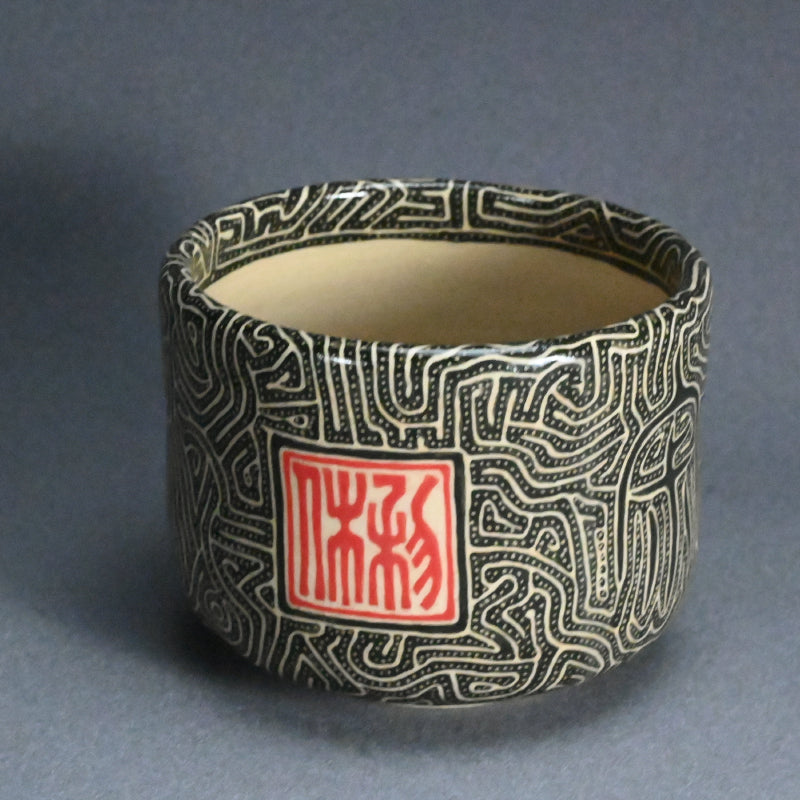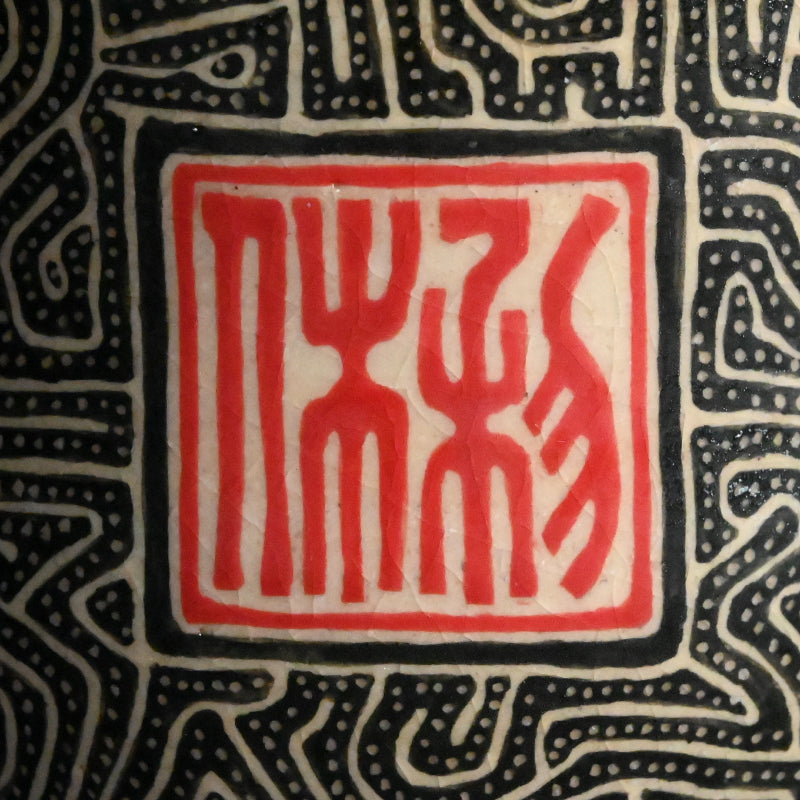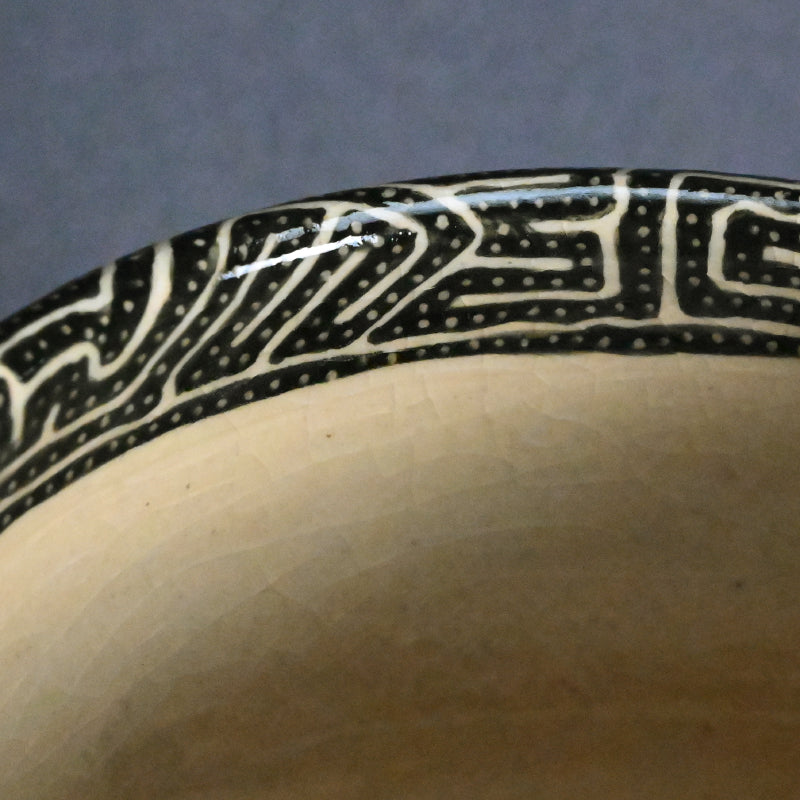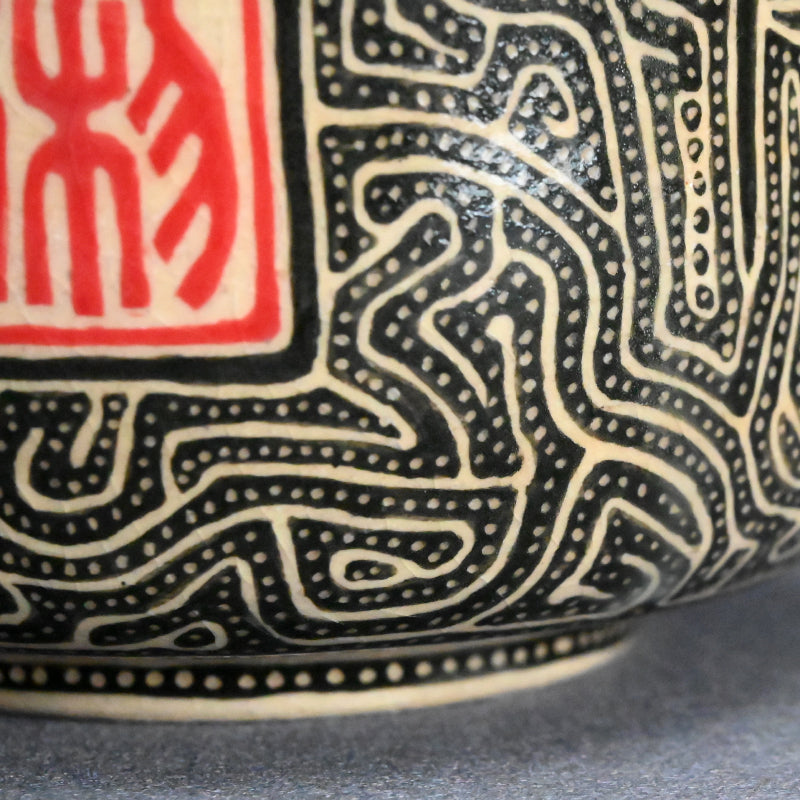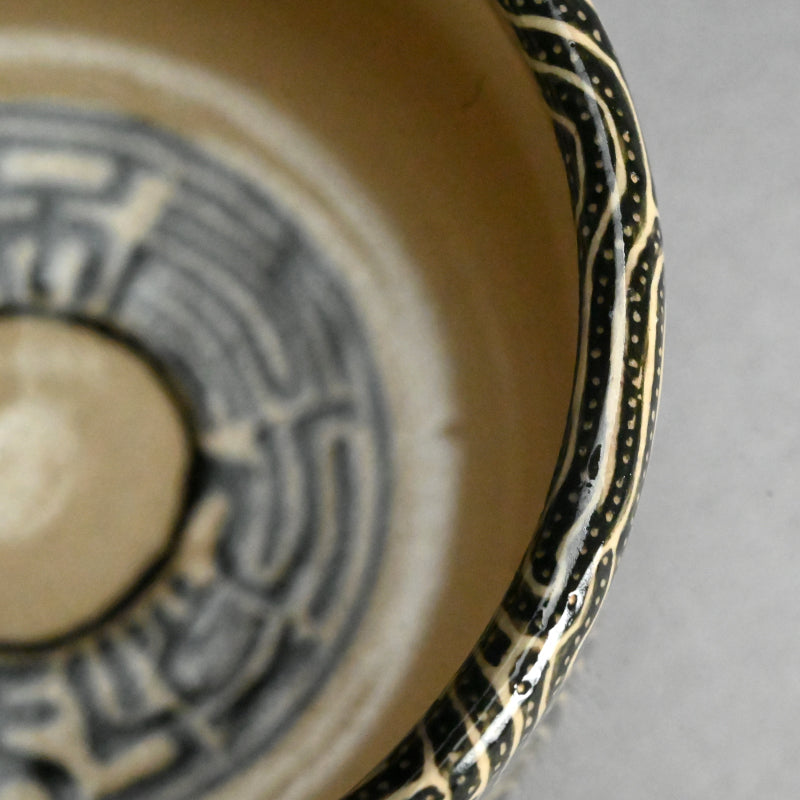Four Precepts of Chado Chawan Tea Bowl ー内堀 明 “風遊紋 茶碗”
Four Precepts of Chado Chawan Tea Bowl ー内堀 明 “風遊紋 茶碗”
Item Code: MC1318
Couldn't load pickup availability
Ethnic sgraffito interjected with hidden characters representing the four principles of the Way of Tea and a bold red stamp reading Rikkyu decorate this deep bowl by Uchihori Akira enclosed in the original siged wooden box titled Fuzoku-mon Chawan. It is 11.5 cm (4-1/2 inches) diameter, 9 cm (3-1/2 inches) tall and in excellent condition, directly from the artist. The Way of Tea rests upon four spiritual pillars: Wa (Harmony), Kei (Respect), Sei (Purity), and Jaku (Tranquility). Articulated by Sen Rikyu, these principles offer not merely guidelines for hosting a tea gathering, but a path toward inner cultivation and mindful presence. Together, these four virtues do not simply shape the form of the tea ceremony—they invite us into a deeper state of awareness, where even the simplest act becomes sacred.
Wa (Harmony): Harmony is the quiet attunement between host and guest, between utensils and surroundings, between humanity and the rhythms of nature. It is the recognition that all things exist in delicate interrelation, and that beauty arises when this balance is honored.
Kei (Respect): Respect is more than courtesy—it is the heartfelt acknowledgment of the worth of others, of the tools we use, and of the traditions that shape our actions. In the tea room, every gesture becomes an expression of reverence.
Sei (Purity): Purity is both inward and outward. It is the clarity of a cleansed space, the precision of a prepared utensil, and the sincerity of one’s intent. To embody purity is to approach each moment with attentiveness and care, free from artifice.
Jaku (Tranquility): Tranquility arises only after harmony, respect, and purity have been cultivated. It is the quietude beyond effort, the stillness that lingers when all striving falls away. In Jaku, one draws near to the essence of Zen—the unspoken truth beneath all appearances.
Uchihori Akira came to the ceramic path late in life, influenced by a lifetime in the art world. He was born in 1948, and began studying oil painting at the age of 16. At 18 he entered a commercial photography studio as an assistant. He began exhibiting his sketches and paintings at the age of 20, and the following year was accepted into the prestigious Nikkakai Exhibition. In his 27th year he embarked on a journey to study copper plate etching in Europe, and at 35 became an illustrator. He continued to exhibit moving to Toki city, home to a strong ceramic tradition, in 1993. At the young age of 58 he began potting, and is now a veteran with 20 years at the wheel. His works are quite unique, his style the result of a lifetime of artistic influences including tenkoku, the art of seal carving, which he has shown us here on this bowl with the red stamp-mark.
Share
